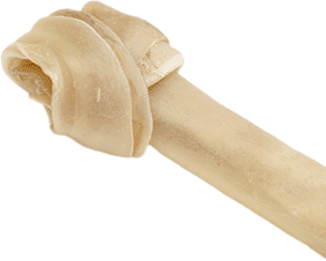


Owning a new lab puppy is an exciting time in your life, but it’s certainly a handful! From potty training to behavioral training, a new dog owner has a ton of responsibilities—sometimes more than they can keep up with.
You’ve heard that crating your lab puppy is a popular and powerful way to train them, but you don’t love the idea of locking up your new best friend in a cage.
Challenging though it might be to crate train your new puppy, it’s often the right thing to do. Crate training benefits both you and your dog in significant ways.
Even if you’re sold on the benefits of crate training your lab, how in the world are you supposed to choose the right kennel? There are more dog crates for sale than you can count, and they come in all different shapes and sizes. To help you buy with confidence, here are the most important details you’ll need to know before you fork over your money.
Crate training is a great way to housetrain your dog and it’s also a handy way to keep your dog out of trouble when you’re not around. Here are some of the top benefits of crate training your lab:
Labs love their crate because they offer a safe place to rest, relax, and sleep. The crate is the perfect place for your animal to retire if they’re feeling overwhelmed with too many stimuli or if they’re just not feeling well.
Some labs feel so attached to their crates, they may choose to eat their food inside or halfway in and out. As your labrador becomes familiar with its crate, the enclosed area will feel comfortable when they’re alarmed. For you, this can also reduce the stress of dealing with anxious dogs.
House training a puppy is tricky in large homes. So here is one of the best training tips: crate your lab puppies to help them become house trained.
A crate can help a puppy remain within a smaller area. If they’re confined to a small space, you know where your pups are, you can keep an eye on them, and you can tell if they’re about to have an accident.
Early crate training gives your dog a safe place to sleep and a familiar space to go to when they don’t feel comfortable in a strange environment.
If you’re going to be away from home, or especially if you’re on the road for long periods of time, then having a crate for your dog’s sleeping area is a great idea. It’s also handy for when your lab has to go to the vet.
Essentially, having labs feel comfortable in their crate gives you options when it comes to transportation, house training, calming a stressed dog, and so much more.
It’s important that your dog crate is the right size for them. In fact, the Humane Society recommends that your dog’s crate should be large enough for them to stand up, sit down, lie down, and turn around in.
Crate size is really important because adult labs need to be able to get into the crate and turn around. If the crate is too large, your labrador can go to the bathroom at one end and sleep at the other and not really feel like they have a den that’s just for them.
However, you don’t have to buy a new crate every year as your lab pup becomes a full-grown adult dog.
When you buy a dog crate, it’s best to buy a full-size crate that should fit your labrador when they’re fully grown, plus a divider panel for the middle of the crate so that you can adjust the size of the crate as your pet grows.
If you’re going to crate train your labrador, make sure you buy them one that’s just big enough for them to stand up and turn around in.
There should be enough space for them to do this, but no more. A crate is meant to be snug and cozy for dogs, so don’t go overboard. This is also why a divider can give labs the right fit and adapt to their growth.
Besides these tips, all you need to figure out is the size of your lab. Here’s a quick way to measure your dog:
To get your dog’s length, make her stand upright on all fours, then take a measurement from the tip of his nose to the base of the tail. Don’t measure to the tip of the tail, or else your crate size may be too large.
Add three to five inches to this measurement and you’ll have the appropriate crate length.
Now you’ll measure the height. Your lab might be taller when sitting upright than he is standing on all fours, so have your dog sit on its behind and look up towards you. Measure from the floor to the very top of your dog’s head.
Once again add three to five inches to this measurement and you’ll have the maximum height you can use for your dog crate.
The crate’s width will be proportionate to the measurements you purchase. So, as long as you have the correct height and length, you’ll have a wide enough crate for your lab to use.
In addition to different dog crate sizes, you can choose different builds that might suit your lab depending on their age and rambunctious nature.
Wire dog crates are the most popular type of dog crate and their construction makes them quite durable. Constructed from metal, these heavy duty crates are also easy to store because you can fold them or collapse them when they’re not in use.
The wire design allows for air to circulate around your pet, which can help cut down on odors. They also allow for handy slide-bolt latches that let you quickly open and close the crate while keeping it secured.
Wire dog crates are best for a puppy that is extremely active. The wire construction allows your dog to look out of the crate and see what is going on around him. This is best for dogs that like to be able to see what is going on.
The main advantage of plastic dog crates is the fact that they are lighter than metal wire ones. This makes them very portable and easy to move around. You can move them from one part of the house to another depending on where you want the dog to sleep.
Plastic crates are often made of high-quality polyurethane, which makes them easy to clean and sanitize. Plus, if you’re resorting to air travel, you’ll need a crate that meets airline cargo specifications. This usually means buying plastic products with a carry handle.
Many plastic dog crates have a divider panel, which can be taken out to enlarge the crate and create more room for a growing pup or adult dog.
One of the advantages of using plastic dog crates is that they can be used for several different purposes. For example, the bottom of the crate can be used as an open dog bed if the crate is no longer wanted. A plastic dog crate is a great way to contain your pet in a comfortable and secure space, whether you’re at home or travelling.
Soft-sided dog crates are a good option for people who aren’t sure if they want to commit to keeping their dog in a crate. Soft-sided dog crates are a good option for the dogs too because they’re a lot more comfortable than wire ones.
When it comes to travelling with your pet, it’s important to have something that’s strong, sturdy and durable. But you also need something that’s compact and lightweight so it doesn’t add a ton of weight to your luggage.
Soft-sided crates are a great option if you want the look of a crate but don’t want to feel like you’re keeping your dog in a cage. They’re great for dogs who get anxious and scared in enclosed spaces or for dogs who are a little bit older and have some separation anxiety.
Wooden crates are a great way to get the functionality of a metal crate, but with the luxury appeal of nice wooden furniture. Like metal crates, wood is a hardworking, heavy duty material, but it’s also warm and natural. Using wooden crates brings a sense of homeliness and comfort to your dog’s crate. Of course, this is also a much more eco-friendly material than metal.
However, a wooden dog crate isn’t the best option when it comes to house training your pup because of the potential for accidents to leave stains. Wood is porous and absorbs urine which means that if your dog has an accident while in the crate, the pee will soak into the wood and leave a stain.
Between your puppy’s age, temperament, and crate experience, there’s a lot to think about when you want to buy a dog crate. You also need to factor in the amount of space in your home and how well you can travel with your crate.
Each type of crate comes with its pros and cons. However, as long as you carefully measure your dog as described above, they’ll be as comfortable as you can make them.
Buying the right size crate is only one of many steps in responsible labrador ownership, so make sure to check out our other training tips for raising a labrador puppy to give your new best friend a long, healthy, content, and happy life.